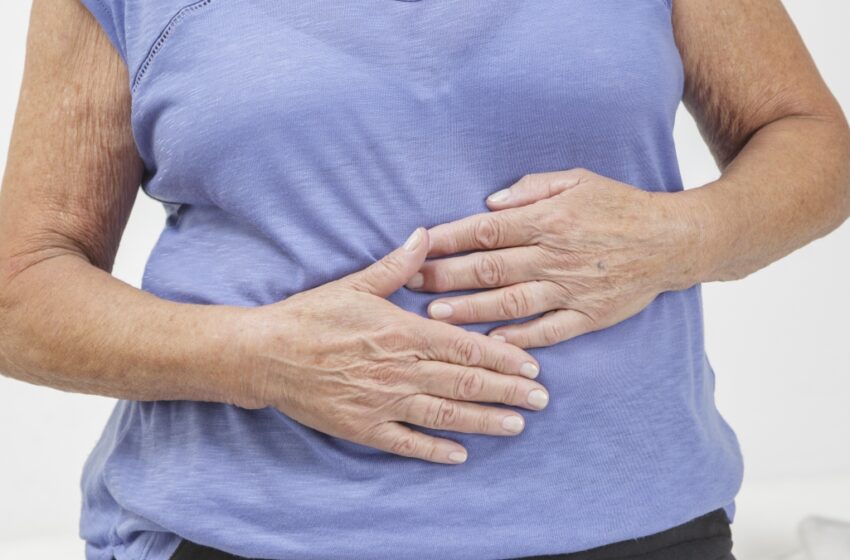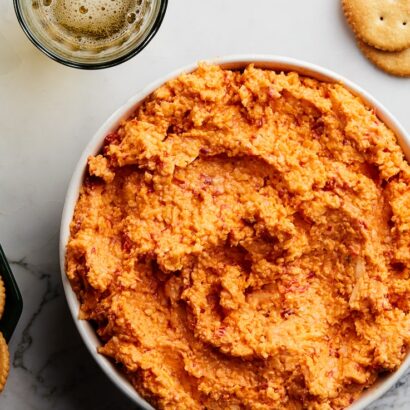Tired and can’t lose weight? If so, a “leaky gut” may be to blame. This condition, defined as tiny gaps between the cells lining the gut, weakens the barrier between the gut and the rest of the body. Those gaps allow toxins to migrate from the gut to the bloodstream, triggers body-wide inflammation, which leads to fatigue, brain fog, weight gain, and joint pain. Plus, endotoxemia — an exacerbation of leaky gut which activates the immune system and creates inflammation — may raise your risk of diabetes.
What’s the fix? While there isn’t a one-size-fits-all solution, there are things you can do to help repair the lining of your gut and reduce inflammation in the body. Below, try these three simple swaps. If they ease your symptoms, including fatigue, brain fog, joint pain, and difficulty losing weight, it may be a sign that you have leaky gut.
1: Swap in sweet potatoes instead of white ones.
Sweet potatoes brim with soluble fiber — fiber that turns into a gel during digestion, slowing down the process and potentially lowering inflammation. Eating them in place of white potatoes, which are mostly starch, may improve symptoms of a leaky gut. In fact, a 2018 study published in Nutrients, conducted over the course of six months, found that dietary fiber helped reduce gut permeability in participants with non-alcoholic fatty liver disease (NAFLD). Why might fiber help? Gut bacteria feed on fiber to produce butyrate, a fatty acid that nourishes intestinal cells.
Also smart: Enjoying side dishes like lentils, kidney beans, broccoli, and avocados, which are all high in soluble fiber as well.
2: Swap in curcumin and Indian frankincense for NSAIDs.
A 2005 study in Clinical Gastroenterology and Hepatology found that 71 percent of people who took NSAIDs like ibuprofen and naproxen daily for 90 days had visible signs of gut damage. This is because NSAIDs can irritate the gut lining and alter the composition and function of the gut microbiome, which, when healthy, protects the gut lining.
A potential alternative to pain meds: curcumin and boswellia. A 2018 scientific review of 11 studies, published in Seminars in Arthritis and Rheumatism, found that a combination of curcumin (found in turmeric) and boswellia (Indian frankincense) eased pain as effectively as NSAIDs in patients with knee osteoarthritis. In addition, patients who took curcumin were far less likely to have gastrointestinal issues, unlike the NSAIDs group.
More research is needed to prove that curcumin and boswellia would work as effectively as NSAIDs for other types of pain. Still, trying these two supplements in combination may be a good alternative when you need pain relief. The combo may also strengthen the gut wall to prevent leakage. (Curcumin may help restore an unbalanced microbiome and reduce inflammation, while boswellia may also reduce inflammation — it may even be useful in treating irritable bowel disease.)
3: Swap in clove tea instead of your go-to warm drink.
Unique compounds, such as eugenol found in cloves, catechins found in green tea, and fructo-oligosaccharides (FOS) found in a sweet-tasting fiber known as inulin, have a powerful ability to heal and strengthen the gut lining, according to William Davis, MD, author of Super Gut. To get maximum benefits, Dr. Davis recommends enjoying two cups of tasty clove tea (which smells like gingerbread cookies!) daily.
To Do: In a small saucepan, combine 2 cups of water and 1 tablespoon of whole cloves and bring to a boil. Reduce heat and cover, maintaining a low simmer for 10 minutes. Add one green tea bag in the last one to two minutes of simmering, then remove from heat and discard tea bag. Stir in 1 teaspoon of FOS powder (such as Jarrow Formulas Prebiotic Inulin-FOS — available at iHerb, $9.07), an additional sweetener of your choice, and one cinnamon stick. Enjoy.
This content is not a substitute for professional medical advice or diagnosis. Always consult your physician before pursuing any treatment plan.
A version of this article originally appeared in our print magazine, Woman’s World.


